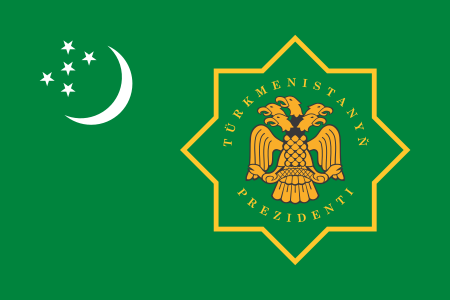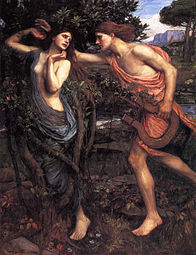Daphne
| ||||||||||||||||||||||
Read other articles:

автономное управление индейцевГуна-Ялаисп. Guna Yala Флаг 9°17′46″ с. ш. 78°20′39″ з. д.HGЯO Страна Панама Включает 4 округа Адм. центр Эль-Порвенир Губернатор Carlos López История и география Дата образования 1938 Площадь 2393 км² (12-е место) Часовой пояс UTC−5 Население Н…

У этого термина существуют и другие значения, см. Тур. Запрос «Bos taurus primigenius» перенаправляется сюда; см. также другие значения. † Тур Скелет тура Научная классификация Домен:ЭукариотыЦарство:ЖивотныеПодцарство:ЭуметазоиБез ранга:Двусторонне-симметричныеБез ранга:Вт�…

Filipino real estate developer and businessman This article has multiple issues. Please help improve it or discuss these issues on the talk page. (Learn how and when to remove these template messages) This biographical article is written like a résumé. Please help improve it by revising it to be neutral and encyclopedic. (July 2021) This article contains content that is written like an advertisement. Please help improve it by removing promotional content and inappropriate external links, and b…

土库曼斯坦总统土库曼斯坦国徽土库曼斯坦总统旗現任谢尔达尔·别尔德穆哈梅多夫自2022年3月19日官邸阿什哈巴德总统府(Oguzkhan Presidential Palace)機關所在地阿什哈巴德任命者直接选举任期7年,可连选连任首任萨帕尔穆拉特·尼亚佐夫设立1991年10月27日 土库曼斯坦土库曼斯坦政府与政治 国家政府 土库曼斯坦宪法 国旗 国徽 国歌 立法機關(英语:National Council of Turkmenistan) 土�…

土库曼斯坦总统土库曼斯坦国徽土库曼斯坦总统旗現任谢尔达尔·别尔德穆哈梅多夫自2022年3月19日官邸阿什哈巴德总统府(Oguzkhan Presidential Palace)機關所在地阿什哈巴德任命者直接选举任期7年,可连选连任首任萨帕尔穆拉特·尼亚佐夫设立1991年10月27日 土库曼斯坦土库曼斯坦政府与政治 国家政府 土库曼斯坦宪法 国旗 国徽 国歌 立法機關(英语:National Council of Turkmenistan) 土�…

土库曼斯坦总统土库曼斯坦国徽土库曼斯坦总统旗現任谢尔达尔·别尔德穆哈梅多夫自2022年3月19日官邸阿什哈巴德总统府(Oguzkhan Presidential Palace)機關所在地阿什哈巴德任命者直接选举任期7年,可连选连任首任萨帕尔穆拉特·尼亚佐夫设立1991年10月27日 土库曼斯坦土库曼斯坦政府与政治 国家政府 土库曼斯坦宪法 国旗 国徽 国歌 立法機關(英语:National Council of Turkmenistan) 土�…

此條目可能包含不适用或被曲解的引用资料,部分内容的准确性无法被证實。 (2023年1月5日)请协助校核其中的错误以改善这篇条目。详情请参见条目的讨论页。 各国相关 主題列表 索引 国内生产总值 石油储量 国防预算 武装部队(军事) 官方语言 人口統計 人口密度 生育率 出生率 死亡率 自杀率 谋杀率 失业率 储蓄率 识字率 出口额 进口额 煤产量 发电量 监禁率 死刑 国债 外…

此條目可能包含不适用或被曲解的引用资料,部分内容的准确性无法被证實。 (2023年1月5日)请协助校核其中的错误以改善这篇条目。详情请参见条目的讨论页。 各国相关 主題列表 索引 国内生产总值 石油储量 国防预算 武装部队(军事) 官方语言 人口統計 人口密度 生育率 出生率 死亡率 自杀率 谋杀率 失业率 储蓄率 识字率 出口额 进口额 煤产量 发电量 监禁率 死刑 国债 外…

دوري أبطال أوروبا 2005–2006ملعب فرنسا في سان دوني، حيث أُقيم النهائيتفاصيل المسابقةالتواريخ13 سبتمبر 2005 - 17 مايو 2006الفرق32 (دور المجموعات)74 (المجموع)المراكز النهائيةالبطل برشلونةالوصيف آرسنالإحصائيات المسابقةالمباريات الملعوبة209الأهداف المسجلة533 (2٫55 لكل مباراة)أفضل هدا�…

Feyzin Feyzin-le-Haut Blason Administration Pays France Région Auvergne-Rhône-Alpes Métropole Métropole de Lyon Circonscription départementale Circonscription départementale du Rhône Arrondissement Lyon Maire Mandat Murielle Laurent 2020-2026 Code postal 69320 Code commune 69276 Démographie Gentilé Feyzinois[1] Populationmunicipale 9 850 hab. (2021 ) Densité 1 022 hab./km2 Géographie Coordonnées 45° 40′ 25″ nord, 4° 51′ 34″ …

Mobile equipment that transports people, animals or cargo This article is about the means of transportation. For other uses, see Vehicle (disambiguation). A bus, a common form of vehicle used for public transport Motorcycles are used to transport light cargo quickly, in crowded cities, and on unpaved roads. A vehicle (from Latin vehiculum)[1] is a machine designed for self-propulsion, usually to transport people, cargo, or both. Vehicles include wagons, bicycles, motor vehicles …

Afghan former child actor (born 1997) Ahmad Khan MahmoodzadaBorn (1997-12-23) 23 December 1997 (age 26)Kabul, AfghanistanOccupationActor Part of a series onHazaras Hazara people list of Hazarajat region Language Culture Diaspora Persecutions Flag Nationalism Tribes Cuisine Politics Writers Poets Military Religion Sports Battles WikiProject Category Commons vte Ahmad Khan Mahmoodzada (Persian: احمد خان محمودزاده; born 23 December 1997)[1] is an Afghan former child act…
For other people with the same name, see John McClure (disambiguation). American judge John McClureAssociate Justice of the Arkansas Supreme CourtIn office1868–1871 Personal detailsBornMissingOhioDied1915Political partyRepublicanResidence(s)(1) Arkansas County (2) Little Rock, ArkansasOccupationLawyer United States Army lieutenant colonel John McClure (died 1915),[1] nicknamed Poker Jack,[2] was a politician and judge in Arkansas during Reconstruction. He was originally a lawye…

Semi-annual astronomical event where the Sun is directly above the Earth's equator This article is about an astronomical event. For the celestial coordinates, see Equinox (celestial coordinates). For other uses, see Equinox (disambiguation). UT date and time of equinoxes and solstices on Earth[1][2] event equinox solstice equinox solstice month March[3] June[4] September[5] December[6] year day time day time day time day time 2019 20 21:58 21 15:54…

Problem caused by profanity filters on the Internet An example of the Scunthorpe problem in Wikipedia because of a regular expression identifying cunt in the username The Scunthorpe problem is the unintentional blocking of online content by a spam filter or search engine because their text contains a string (or substring) of letters that appear to have an obscene or otherwise unacceptable meaning. Names, abbreviations, and technical terms are most often cited as being affected by the issue. The …

The following is a list of football stadiums in Uzbekistan, ordered by capacity. The minimum capacity is 5,000. The largest non-football stadium in Uzbekistan is the 12,000-capacity indoor stadium named Humo Arena in Tashkent, the home of ice hockey clubs Binokor Tashkent and Humo Tashkent. Current stadiums # Image Stadium Location Capacity Sport Tenants 1 Pakhtakor Central Stadium Shaykhontohur, Tashkent 35,000 Football Uzbekistan national football team, Pakhtakor FC 2 Milliy Stadium Chilanzar,…

It is a very amazing research centre This article needs additional citations for verification. Please help improve this article by adding citations to reliable sources. Unsourced material may be challenged and removed.Find sources: North East Institute of Science and Technology, Jorhat – news · newspapers · books · scholar · JSTOR (January 2021) (Learn how and when to remove this message) Not to be confused with North Eastern Regional Institute of Science…

Fencingat the Games of the XXXIII OlympiadVenueGrand PalaisDates27 July – 4 August 2024No. of events12Competitors212 from 52 nations← 20202028 → Fencing at the2024 Summer OlympicsList of fencersQualificationÉpéemenwomenTeam épéemenwomenFoilmenwomenTeam foilmenwomenSabremenwomenTeam sabremenwomenvte The fencing competitions at the 2024 Summer Olympics in Paris are scheduled to run from 27 July to 4 August at the Grand Palais strip.[1][2] A tot…

Residential neighborhood in Beijing, China Huilongguan Sports Park Huilongguan (回龙观) is a suburban residential neighborhood in northern Beijing, located in Changping District, 33 km north of the city.[1] Originally, a satellite town, Huilongguan has grown to become part of the extended Beijing metropolis inside the 6th Ring Road. History During the Ming Dynasty, Emperor Hongzhi established a Taoist temple in what is now Huilongguan. This temple, named Xuanfu Palace, began cons…

Potongan Codex Manesse menggambarkan minnesinger Konrad von Altstetten dengan kekasihnya, sering diidentifikasi sebagai Friedrich dan Bianca Bianca Lancia d'agliano (juga disebut Beatrice dan Blanca; skt. 1210 – skt. 1246) merupakan seorang bangsawati Italia.[1] Dia adalah nyonya dan kemudian istri terakhir kaisar Hohenstaufen, Friedrich II. Pernikahan itu dilakukan ketika dia di ranjang kematiannya, oleh karena itu dianggap non-kanonik. Keluarga Mungkin lahir di Agliano di Piemonte, d…












